A Salvaged Banksy Mural is Now on View in NYC
This unique Banksy mural goes up for auction on May 21st in NYC!


This is an article by photographers and authors James and Karla Murray, who lead our food tour of the disappearing storefronts of the East Village. On their most recent exploration, they head to Krakow, Poland to explore and photograph the Liban Quarry, an abandoned World War II Nazi work camp.
Arriving in Krakow, Poland where we would spend the next 5 days, we knew at least one of those days would be devoted to traveling to the site of the nearby Auschwitz concentration camp. That was our plan. But on our first day in Krakow, we heard from a local about an abandoned World War II Nazi work camp just outside the center of the city. The work camp was located in an old limestone quarry that was left to slowly decay and was mercifully being reclaimed by nature. Feeling that this might give us a unique perspective on the atrocities that took place not only in Poland, but across Europe not that long ago, we decided to hike across the Vistula River to get a better look. In an age where tolerance unimaginably seems to be brought into question again, we wanted a quiet and somehow more personal experience than we felt we would get in the tourist-heavy memorial and museum sites nearby.
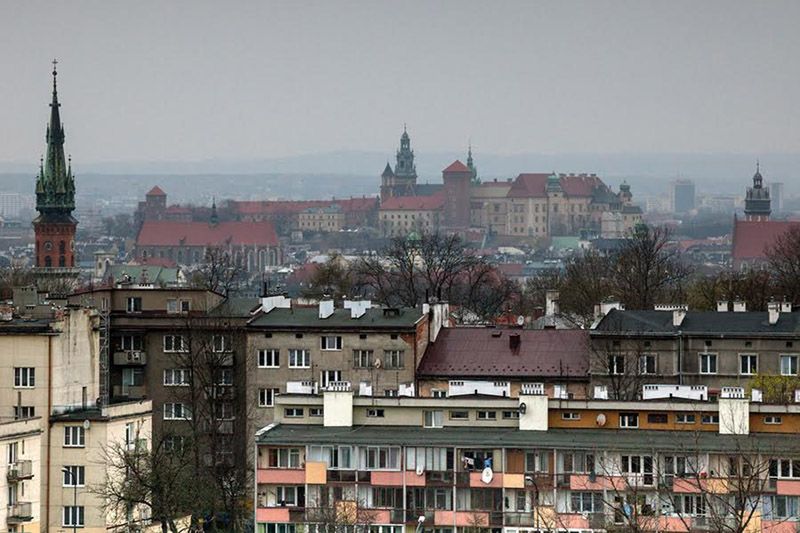
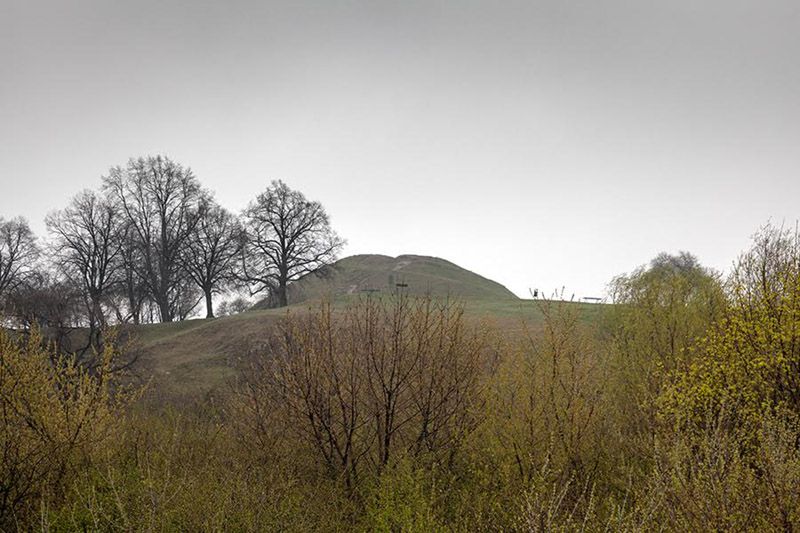
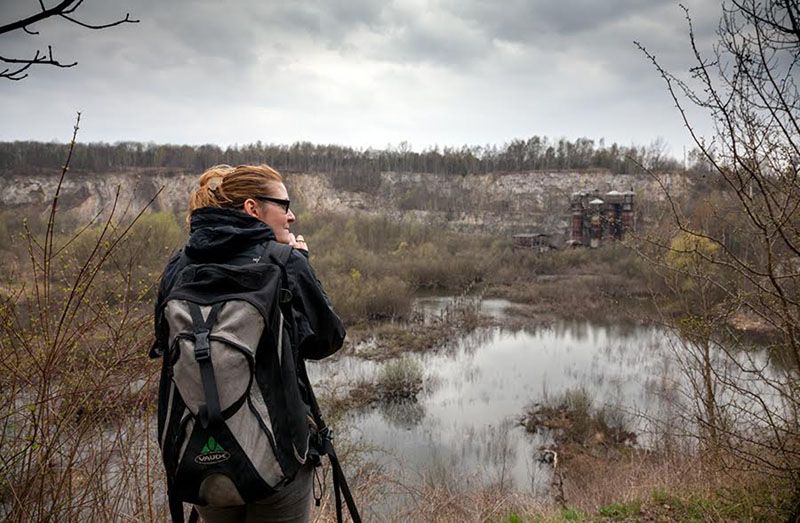
The quarry is located on the south side of the Vistula River and can be reached from the center of old Krakow by walking down Krakowska Street across the Pilsudskiego Bridge toward the Krakus Mound. Once on the Krakus Mound, you can reach the quarry itself by following an unmarked path toward the Podgórze Cemetery along its rim. Standing on the rim of the quarry in a driving rain, an unseen weight pushing on our shoulders, already heavy with backpacks, we knew we had made the correct choice. We were the only two living things taking in the gray, wet, and sorrowful vista at that very moment. We started shooting photographs. The experience was profound. Loose gravel underneath our feet broke the deafening silence as we left the rim, the ancient Krakus Mound behind us, and began our decent into the quarry. We found our minimal conversation was spoken in a hushed whisper. The question of why we were whispering was met with a shrug.
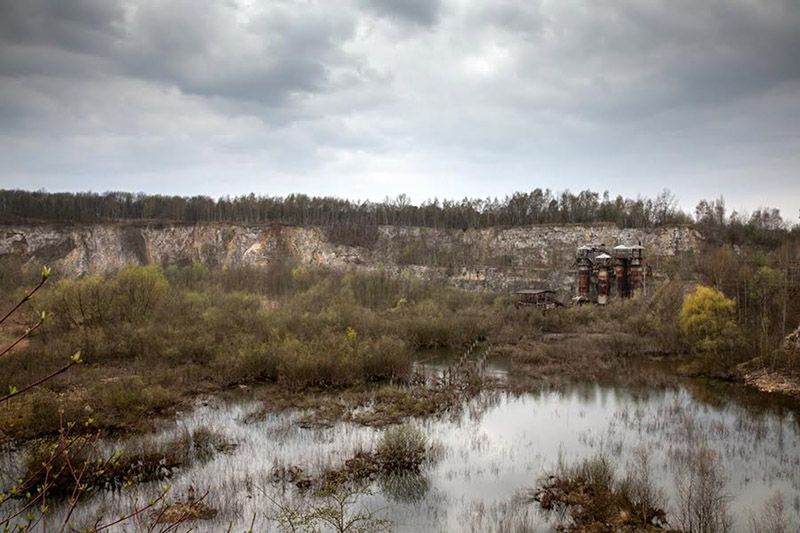
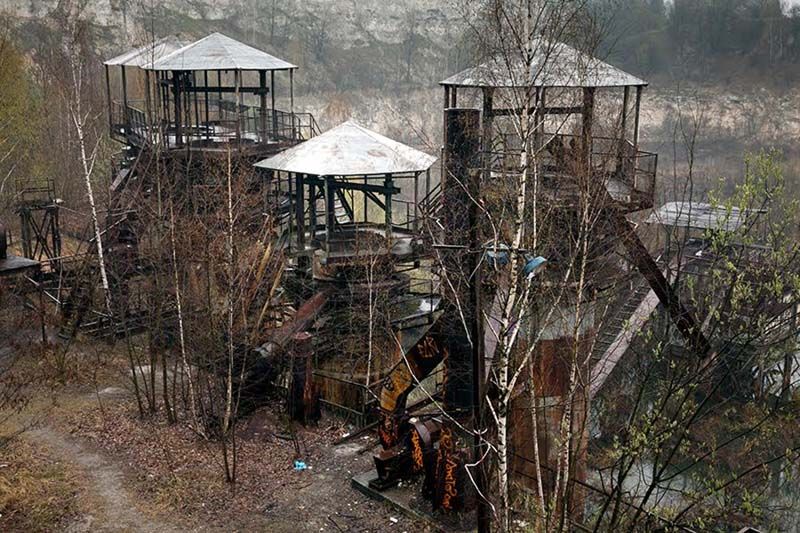
The Liban Quarry in Krakow, Poland was established in 1873 as part of a limestone company, “Liban and Ehrenpreis,” owned by two Jewish industrial families from Podgórze. Buildings and a railway line were laid as limestone was excavated from the rock. The quarry later focused on the production of quicklime, where the limestone rock is crushed and fed into kilns where it is heated to produce quicklime or lime, a versatile mineral with a variety of chemical uses including steel manufacturing and construction. During World War II from 1942 to 1944, the Nazis took over the Liban Quarry and used prisoners from the nearby Plaszów Forced Labor Camp to perform manual labor at the quarry for its wartime construction efforts. The large rusted lime kiln structures that remain at the long abandoned quarry today are likely from its usage after the war, when it resumed operation after the Germans “cleaned out” the work camp before Russians liberated the area.
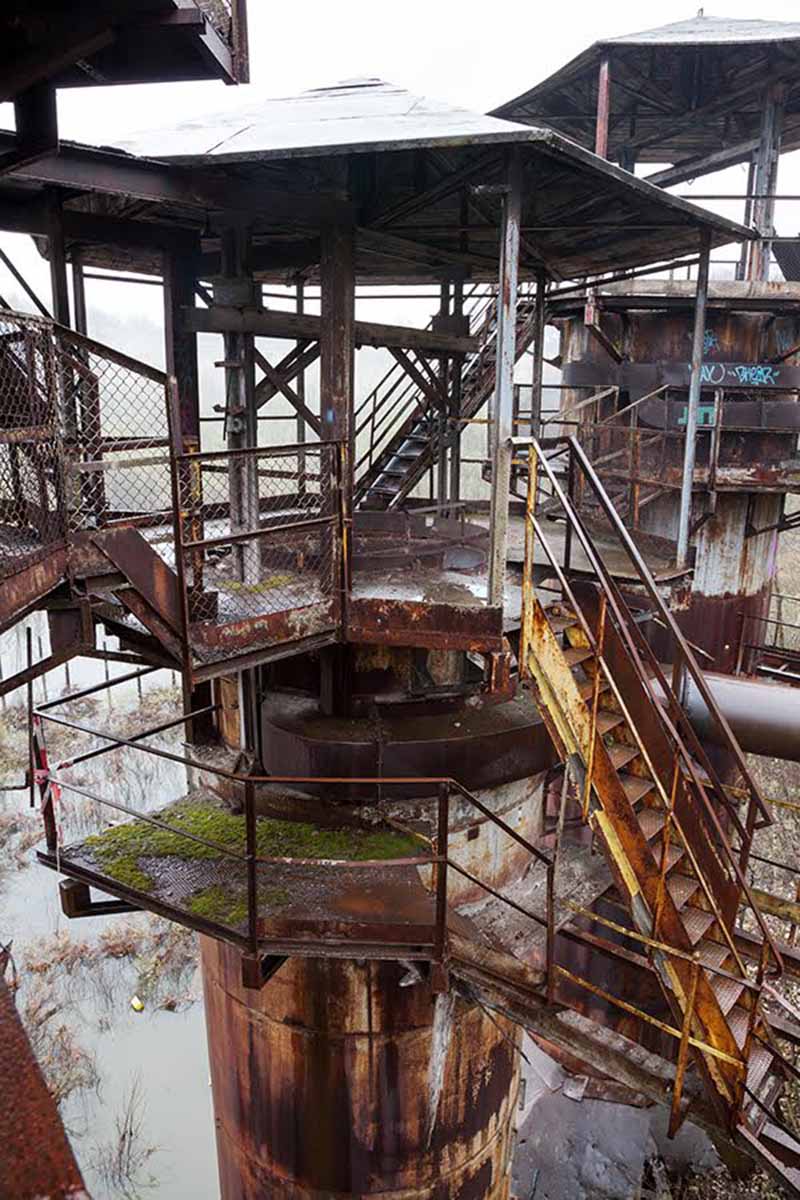
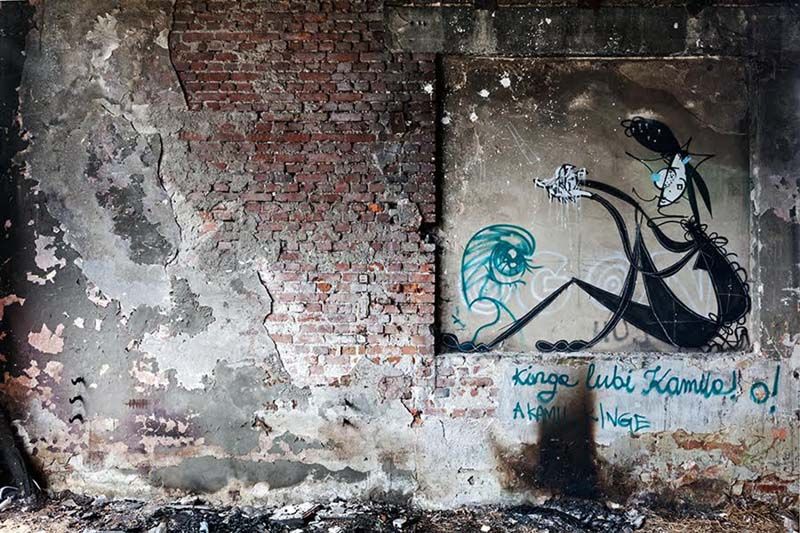
The Liban Quarry became more widely known for its use by Steven Spielberg as the set of all the Plaszów Labor Camp scenes from his movie Schindler’s List based on the book Schindler’s Ark. Mr. Spielberg did not want to use the actual Plaszów Forced Labor Camp location out of respect for inmates who were exterminated at the camp on the orders of SS commandant Amon Goeth. As determined by the Highest National Tribunal of Poland, after hearing witness testimony from survivors, approximately 8,000 people died in the Plaszów camp by execution. Speilberg constructed 34 barracks, watchtowers, fence posts strung with barbed wire, and even a pathway lined with Jewish headstone props at the abandoned Liban Quarry as a highly realistic replica of the Plaszów Forced Labor Camp. He likely chose the quarry as it not only was scenic with huge limestone rock cliffs as well rusty lime kilns and other quarry machinery abandoned in place, but it also had a historic connection to the WWII SS atrocities as mentioned in the book. The headstone pathway was recreated by Spielberg because at Plaszów, the Nazis used real tombstones from Jewish graveyards at the site of the labor camp to pave the roads leading into the camp so that the prisoners were forced to walk over the relics of their ancestors on their way to and from work every day. Although many of the structures constructed for the movie set were dismantled and removed after filming was completed in 1993, the recreated fence posts strung with barbed wire and the tombstone road remain.
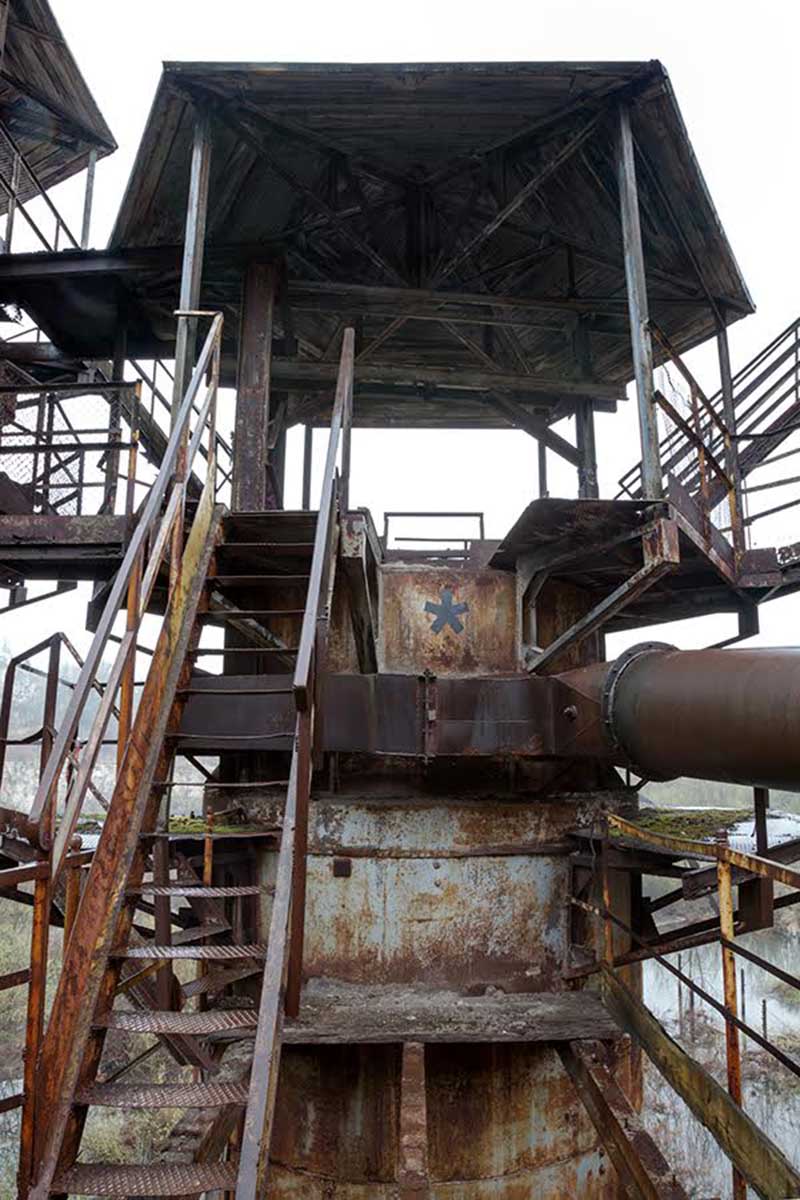
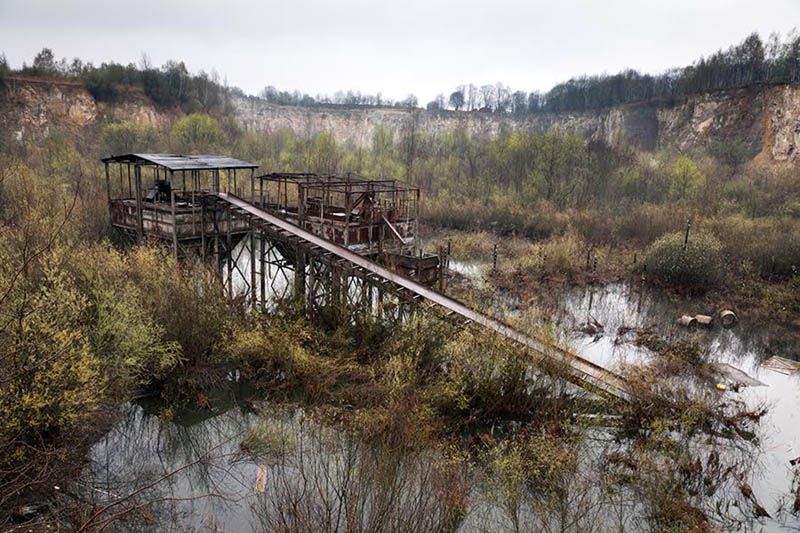
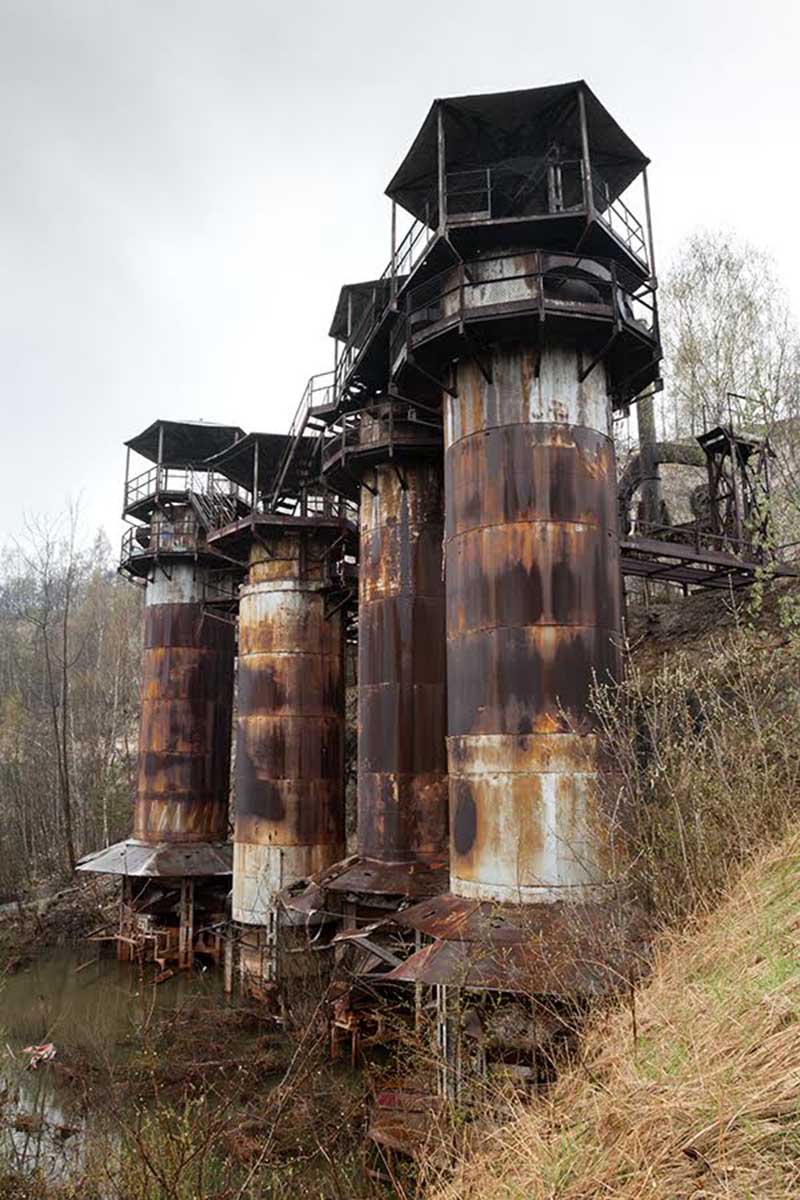
When walking around the quarry, we immediately felt a powerful sense of history. Instead of walking through a curated tour of a largely recreated concentration camp, you can wander amongst the abandoned structures and get a sense of what it must have been like to perform forced manual labor while at the quarry.
All photos by James and Karla Murray
Next, check out Broken Windows: Graffiti NYC Book Celebrates its 15th Anniversary and The 1933 Rally Against Hitler at Madison Square Garden.
Subscribe to our newsletter